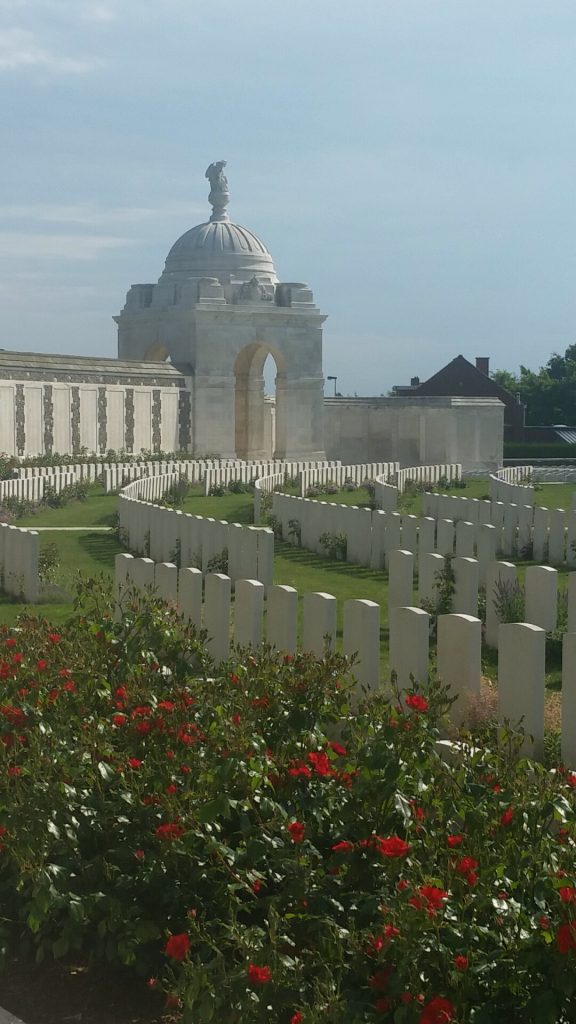During our first stop at the Lijssenthoek cemetery I found myself walking the rows, moved to tears at the amazing expanse of manicured green grass and tombstones staring back at me. Seeing the ages of the young men flash by me tombstone after tombstone, I couldn’t help but imagine what it would have been like for them. Some of them were even my age and younger. The magnitude of having to go off to war to serve their country—let alone the grief experienced by those they left behind at home, followed me.

A view of the Tyne Cot cemetery, one of the many we’ve visited on this trip. Photo: Catherine Charlebois
Some of us on this trip have often marveled at the amount of cemeteries here, with sometimes upwards of two to three in a small village. After seeing so many, there is a tendency to gloss over the enormity of what they represent and conceptualize the importance of these losses.
Working for the Canadian Letters and Images Project, which digitizes war letters, has taught me that every soldier has a story, and the importance of remembrance. Though I may not know every since person’s story as I walk by their resting place, the research and soldier presentations we give as participants of the CBF helps to humanize those we have sought out. As one of the tombstone engravers eloquently put it while restoring a weathered inscription, “[They] preserve the stone, and [people like us] preserve the memory.”
Catherine Charlebois
